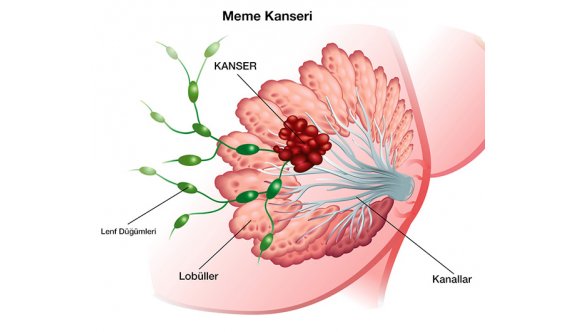-Protection from Breast Cancer

Breast cancer continues to be an important health problem. Epidemiologically, 10% of the female population up to the age of 70 is diagnosed with breast cancer. The effect of early diagnosis on survival is indisputable. Therefore, from the point of view of preventive medicine, self-examination training is particularly emphasized.
Applications to the physician due to clinical symptoms related to the breast are a significant number. “Human maintenance organisation” According to (HMO) data, visits to physicians due to breast-related complaints have reached 16% in the last 10 years.
Prevention from breast cancer can be divided into two as surgical and non-surgical methods. Non-surgical methods are mostly aimed at eliminating or reducing the risk factors and modifiable factors for breast cancer. For example, obesity, which has become a more and more important health problem nowadays, and along with it, high blood lipid levels, especially cholesterol, pose a risk for breast cancer.
With the changes to be made in the lifestyle, the first of these is regular exercise and attention to the diet, which reduces the risk of obesity and therefore the risk of breast cancer. In addition, it is known that diabetes, which often goes hand in hand with obesity, is a risk for breast cancer today.
It is claimed that especially vitamin E in nutrition has a protective effect against breast cancer. Beta carotene maintains its controversial position in this regard. Studies on the protective effect of vitamins B6 and B12 and folic acid are ongoing.
It is now known that alcohol poses a risk for breast cancer. However, although smoking remains unclear, it has been shown to cause some disorders related to the milk ducts and surrounding tissue.
The number of studies indicating that the continuous use of birth control pills for 5 years or more, except for mandatory conditions, can cause breast cancer even years after the drug is discontinued.
It should be kept in mind that early menstruation and delayed menopause are a risk in developed countries, and growth monitoring should be done carefully in girls. After the age of 40, gynecological controls should not be delayed.
Breast biopsies are present in 5% of all surgical pathology samples. Although many clinical symptoms in the patients who apply are mostly related to benign breast diseases, 4% of the applications to the breast polyclinics are; &ü; is diagnosed with cancer. Despite the advances in imaging methods, 26% of surgical interventions are aimed at demonstrating the presence of cancer.
Surgically, “prophylactic mastectomy and silicone=bilateral protective mastectomy” Its application can only be recommended in patients with BRCA1 and BRCA2 carriers. This can be demonstrated by tests to be done after a genetic counseling. Apart from this, the decision should be made very carefully since it is an operation that will affect the life of the woman, although there are no risky pathological findings detected after any biopsy.
